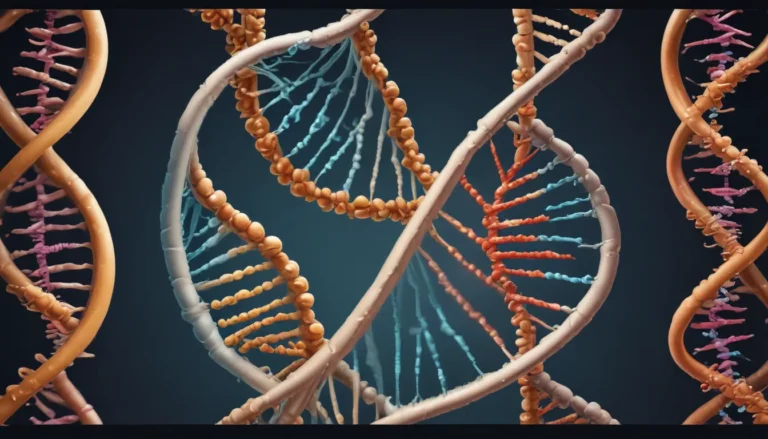A Note About Images: The images used in our articles are for illustration purposes only and may not exactly match the content. They are meant to engage readers, but the text should be relied upon for accurate information.
Are you captivated by the intricate world of chemistry and its applications in various scientific disciplines? Dive into the realm of electrochemistry with the Nernst equation, a fundamental concept that unravels the mysteries of chemical reactions and electrochemical cells. Let’s embark on a journey to explore eight fascinating facts about the Nernst equation, shedding light on its significance, applications, and impact on the scientific community.
Understanding the Nernst Equation
Delving into the core principles of electrochemistry, we encounter the Nernst Equation, named after the renowned German physicist Walther Hermann Nernst. This equation serves as a cornerstone in the study of redox reactions and the behavior of electrochemical cells, providing vital insights into the relationship between the equilibrium potential of a half-cell and the activities or concentrations of participating species. By incorporating temperature and the Faraday constant, the Nernst Equation offers a profound understanding of how chemical systems respond to changes in reactant concentrations and temperature variations.
Unraveling Cell Potential with the Nernst Equation
A key application of the Nernst Equation lies in its ability to calculate the equilibrium potential of an electrochemical cell. By harnessing the power of this formula, scientists and chemists can predict the voltage difference between two electrodes in a system at equilibrium, enabling them to determine the spontaneity of chemical reactions. This predictive capacity plays a pivotal role in diverse fields such as battery technology and corrosion prevention, shaping our understanding of energy storage and environmental sustainability.
Harnessing the Nernst Equation in pH Determination
Beyond its traditional role in electrochemistry, the Nernst Equation proves versatile in determining the pH of a solution. Through innovative modifications and application techniques, this equation can be utilized to measure the potential difference between reference and pH electrodes, offering a reliable method for calculating the pH of a solution. This innovation serves as the foundation for pH meters and significantly impacts chemical analysis and environmental science, opening avenues for precise measurement and analysis in various industries.
Exploring Biological Applications of the Nernst Equation
Venturing into the realm of biology and medicine, the Nernst Equation emerges as a valuable tool for understanding physiological and biochemical systems. By elucidating the electrical potential across biological membranes and ion concentration gradients driving essential processes like nerve impulses and muscle contractions, this equation plays a pivotal role in unraveling the mysteries of living organisms. Its applications in designing medical devices and studying biological processes underscore its significance in advancing healthcare and scientific research.
Empowering Electroanalytical Chemistry with the Nernst Equation
In the domain of electroanalytical chemistry, the Nernst Equation reigns supreme as a foundational tool for quantitative analysis of substances. By measuring potential differences between indicator and reference electrodes, chemists can determine the concentration of ions or molecules in a solution, facilitating precise measurements in environmental monitoring, pharmaceutical analysis, and quality control processes. This application underscores the practical implications of the Nernst Equation in real-world scenarios, driving advancements in analytical chemistry.
Adapting the Nernst Equation for Real-world Systems
While the Nernst Equation originates from ideal assumptions, its adaptability to real-world systems is a testament to its versatility. Through modifications that consider activities, ion interactions, and deviations from ideal behavior, this equation accounts for non-idealities in practical applications. These adjustments enhance the accuracy of predictions and calculations, ensuring reliable outcomes in complex chemical systems.
Catalyzing Advances in Electrochemical Research
The legacy of the Nernst Equation extends beyond theoretical realms, catalyzing significant advancements in electrochemical research. By empowering researchers with a robust tool to explore electrochemical processes, this equation has paved the way for breakthroughs in energy storage, corrosion prevention, environmental monitoring, and analytical chemistry. Its enduring impact on scientific inquiry underscores its role as a catalyst for innovation and discovery in diverse scientific domains.
Conclusion
Unveiling the mysteries of the Nernst Equation illuminates the intricate interplay between chemical systems and electrochemical processes. By embracing its principles, scientists can unravel the complexity of redox reactions, energy changes, and system behavior with precision and insight. From practical applications in pH determination to theoretical foundations in electrochemistry, the Nernst Equation stands as a testament to the power of scientific inquiry and innovation.
FAQs
-
Q: What is the Nernst Equation?
A: The Nernst Equation is a fundamental formula that relates the cell potential of an electrochemical cell to the concentration of reactants and products involved. -
Q: Why is the Nernst Equation important?
A: The Nernst Equation enables scientists to calculate the equilibrium potential of a cell, providing crucial insights into the underlying chemical reactions and energy changes in electrochemical systems. -
Q: Can the Nernst Equation be applied to any electrochemical cell?
A: Yes, the Nernst Equation is universally applicable to electrochemical cells, making it a valuable tool in various scientific disciplines. -
Q: How does pH affect the Nernst Equation?
A: The Nernst Equation is pH-dependent, with changes in pH significantly influencing the cell potential and behavior of electrochemical systems. -
Q: Who is Walther Nernst?
A: Walther Nernst, a distinguished German physical chemist, made significant contributions to thermodynamics, receiving the Nobel Prize in Chemistry in 1920 for his work in electrochemistry. -
Q: How is the Nernst Equation used in practical applications?
A: The Nernst Equation forms the basis for experimental techniques such as potentiometry and ion selective electrode measurements, playing a pivotal role in developing and optimizing electrochemical devices like batteries and fuel cells.
Embark on a journey of scientific discovery and exploration with the Nernst Equation as your guiding star, unlocking a world of possibilities and insights in the fascinating realm of electrochemistry. Let curiosity be your compass as you navigate the intricate pathways of chemical processes and electrochemical systems, propelled by the timeless principles embodied in the Nernst Equation. Join us in the quest for knowledge and innovation as we unravel the mysteries of the Nernst Equation and its transformative impact on the scientific landscape.






